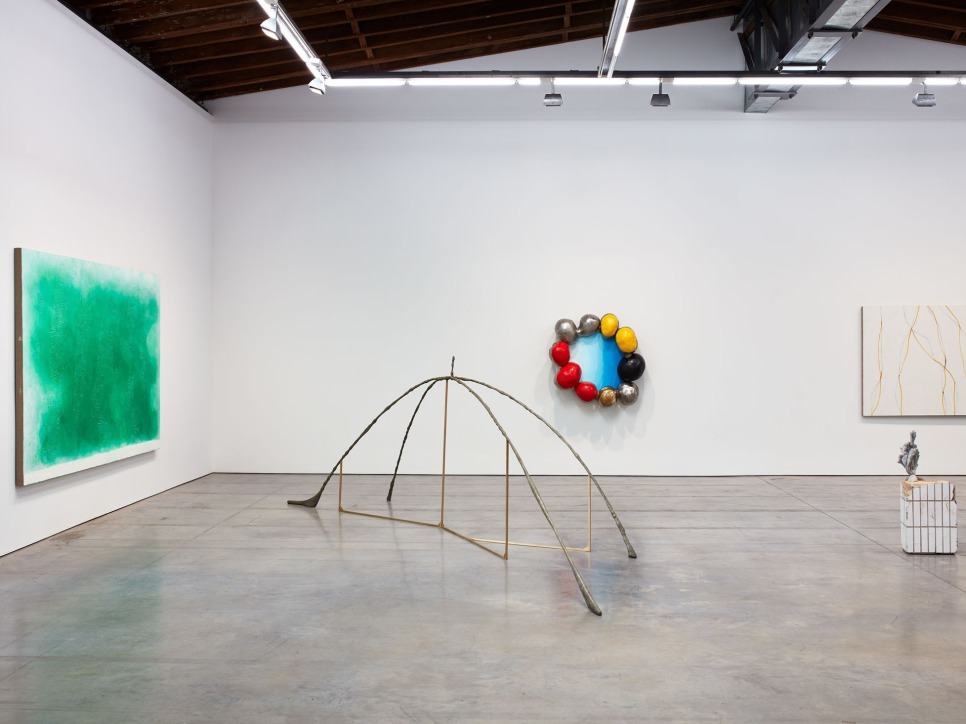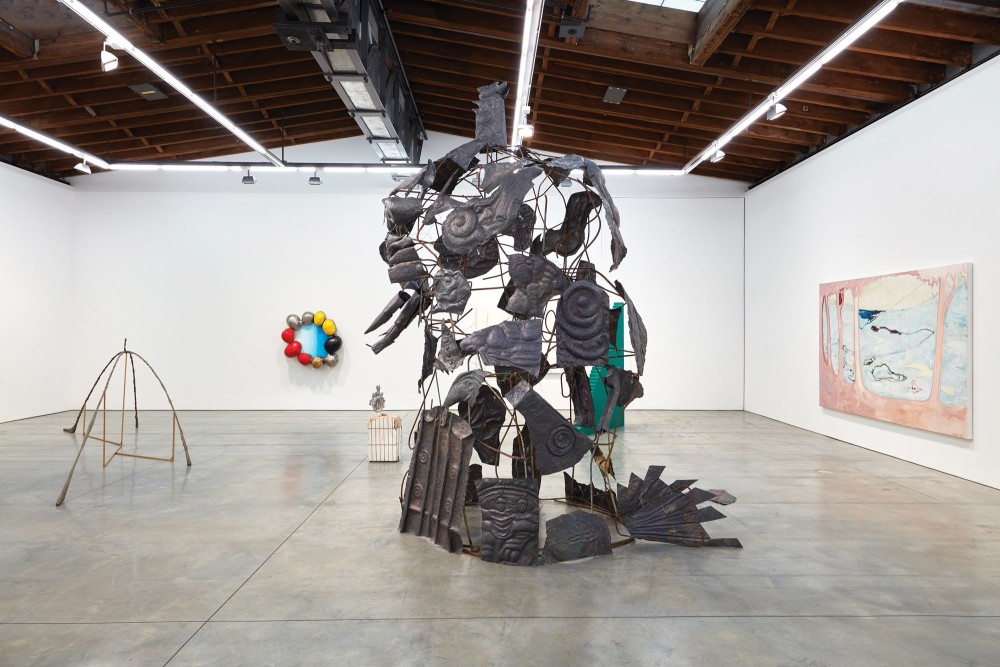

View of the exhibition “A Composite Leviathan,” 2019, at Luhring Augustine Bushwick.
In 2012, when James Elaine first offered the Chinese artist Zhang Xinjun a show at Telescope, Elaine’s alternative space in Beijing, the artist turned him down. “I was left scratching my head,” Elaine said, “thinking, I’m a curator from the U.S., in a way I’m a doorway to the outside world, I don’t charge you anything, why would he say no?” Later, Zhang changed his mind and after his show opened, he told Elaine that when they first met he was suspicious of Elaine’s motives, and friends had warned him that a foreigner would only steal his money. But according to Elaine, after the show, the artist was ecstatic and said, “I realized this is where my work belongs in a nonprofit context and this is the most important thing I’ve ever done as an artist.”
With his crown of curly white hair and favored outfit of jeans and sneakers, Elaine stands out as a foreigner as he rides his bicycle into the heart of Caochangdi, the village-like neighborhood on the outskirts of Beijing where he opened Telescope seven years ago as an experimental gallery space catering to as-yet-unknown emerging artists. While other dealers moving in to Caochangdi built freestanding white cubes with cement floors, Elaine opted for a modest storefront that blends in with the area’s restaurants and fruit stands. He wanted to introduce Chinese audiences to the notion of an “alternative space,” a not-quite-not-for-profit that grants young Chinese artists the freedom to test new ideas. It’s a novel concept in a country that does not officially recognize nonprofit status and in an art scene dominated by commercial galleries and auction records.
Read full article at artnews.com

